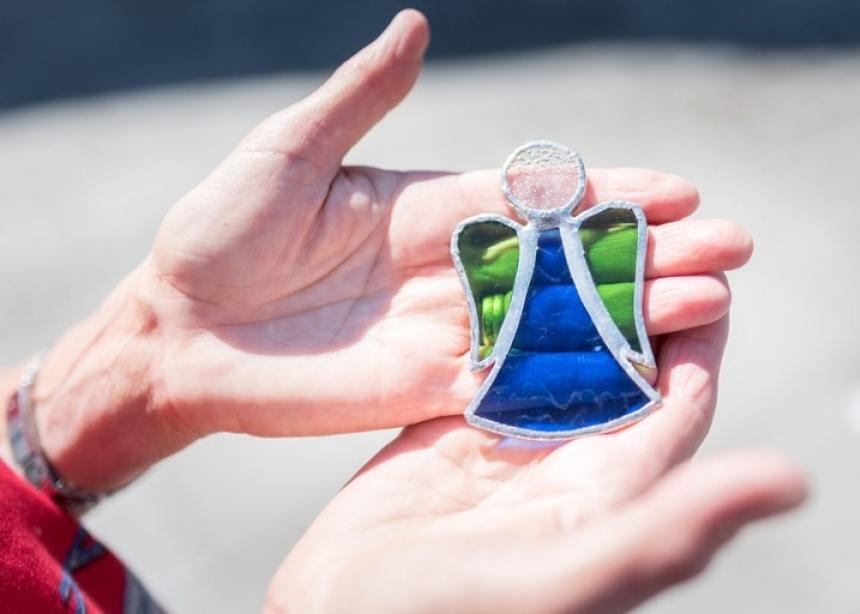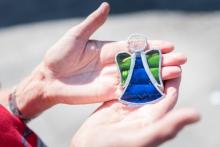Originally, they were made of pieces of broken glass from the rubble an Israeli tank left behind when it slammed into the gift shop at the International Centre of Bethlehem (ICB) in 2002. Today the glass angels of peace are made of used bottles and have emerged into a small business enterprise employing around 50 people in the Bethlehem area. Since the tank incident, thousands of angels have been produced and sold worldwide.
Inger Jonasson, a Swedish missionary and art teacher who worked at the Art and Culture Centre at the ICB from 2004 to 2012, explains the theological reasoning behind the angel project, “Broken glass can be seen as a sign of the brokenness in our world, which is also a reason why God became a human being. Through incarnation, God brought the divine and the human together. He embraced what seemed worthless and hopeless and transformed it to something beautiful and complete. This incarnation, which took place in Bethlehem more than 2,000 years ago, is what gives us strength to seek people with broken lives and lost hope.”
A long-time advocate of peace and reconciliation in Israel and Palestine, Jonasson has been involved in a number of cultural programmes over the years, and she continues to work as a teacher one month each year at the Dar al Kalima University College of Arts and Culture (DAK) in Bethlehem.
She explains, “The angels of peace are messengers of justice, peace and dignity. And they have become an important lifeline for many Palestinian families in an area where 70 percent of the adult population used to be unemployed.”
Jonasson is particularly fond of art projects that transform sad things into something hopeful. The angels of broken glass allude to suffering and have become a symbol of sympathy with the Palestinian people.
“It is an idea born out of rubble which has grown into a powerful manifestation of peace,” Jonasson says.
Many of the angel makers have been art students in classes led by her and she continues to inspire young artists. She chairs Friends of DAK in Sweden, which gives scholarships to art students at the Dar al Kalima College. For several years, she arranged tours for Swedish painters to Galilee, Bethlehem and Jerusalem, where the Swedish painters painted together with her Palestinian students and gave joint exhibitions at DAK.
Her own engagement is largely inspired by Rev. Dr. Mitri Raheb, a Lutheran pastor in Bethlehem and founder of the College of Arts and Culture.
“He has been a driving force for art and culture and launched numerous programmes. Art and culture are crucial elements in building a democracy, especially in times of hopelessness,” Jonasson concludes.




Comments
What a wonderful things you are doing! Good for you. How true it is that God knew that our lives were broken like the glass is broken, yet he came for those who would accept him (like I have done), and I have never been sorry for that.
Add new comment
Canadian Mennonite invites comments and encourages constructive discussion about our content. Actual full names (first and last) are required. Comments are moderated and may be edited. They will not appear online until approved and will be posted during business hours. Some comments may be reproduced in print.